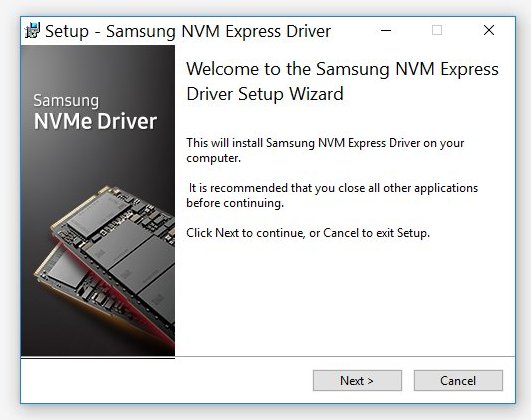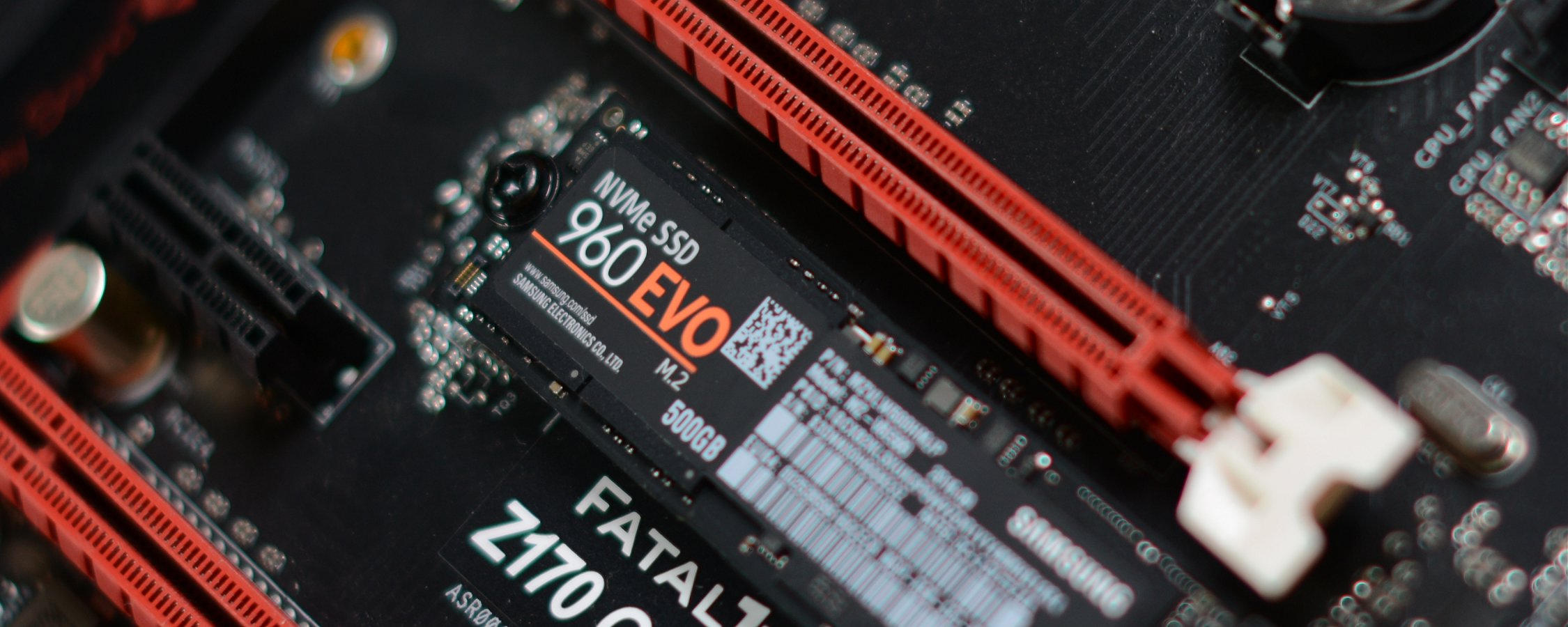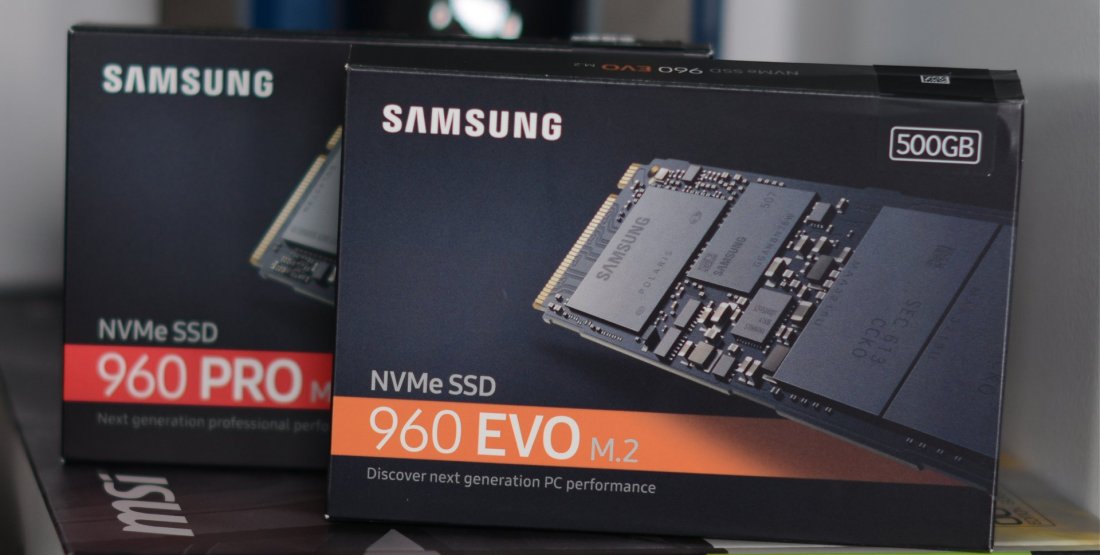We liked what we saw when we tested Samsung's SSD 960 Pro nearly a month ago, however availability for the company's new flagship M.2 NVMe SSD has been spotty at best. It's been a rather long wait for enthusiasts and while it should be possible to order a 960 Pro, the drive is currently out of stock in all capacities on Newegg and strangely the 1TB variant isn't expected to show until January 2.
The 960 Pro's class-leading M.2 NVMe performance, excellent endurance ratings, and five-year warranty positioned it as the fastest consumer-grade SSD power users could hope to get their hands on. The only drawback to Samsung's new series so far appears to be the price and while not outrageous by any means, a cost of $0.64/GB for the cheapest model is still expensive.
Remedying this concern, Samsung has unleashed its more affordable 960 Evo series, which is also made in a smaller 250GB capacity. The crazy thing here is that the 250GB model costs $130, taking the cost per gigabyte for this series down to ~$0.50. That's still pretty pricey compared to TLC SATA drives such as the Crucial MX300, but we also expect the 960 Evo to have a performance advantage.
Like the 960 Pro, the 960 Evo is powered by Samsung's Polaris controller coupled with Samsung's 48-layer V-NAND. Although the 960 Evo has been outfitted with TLC memory instead of MLC, the claimed impact on performance is minor with sequential read speeds dropping from 3.5GB/s to 3.2GB/s and write throughput going from 2.1GB/s to 1.9GB/s.
In other words, you'd be paying over 20% less for the 960 Evo than the Pro and yet the impact on performance could be considerably less than that. The new Evo series should also compare strongly against Crucial's TLC-based MX300, which claims sequential read speeds of 530MB/s and write speeds of 510MB/s. With that, we're keen to see what Samsung's TLC NVMe SSD brings to the table.
The King of the TLC Hill
As just mentioned, the 960 Evo series really isn't that different from the Pro series we looked at last month. The only real change being the use of TLC NAND flash, rather than the costlier MLC NAND.
The use of TLC memory brings three key differences for the Evo series: probably least concerning is the reduced endurance rating, though the slightly lower performance isn't that worrying either, whereas the cost savings will likely be of interest to many of you.
Compared to MLC which stores two bits per cell, TLC stores three bits per cell to improve density (capacity), but in doing so reduces performance and most crucially endurance. The 960 Pro 512GB model for example sports an endurance rating of 400 terabytes written and that figure has been halved for the 500GB Evo model. As such, the warranty period offered by Samsung has been reduced from five years to three.
Putting 200TB worth of writes into perspective, over a three-year warranty period you would have to be writing 182GB per day to reach the advertised limit of safe writes. That's an insane amount of data and you'd be filling the entire drive every few days at that rate. In my opinion, it would be unrealistic to suggest that typical users would write so much data in an average week.
I installed a Samsung 950 Pro 512GB SSD in my main work PC about six months ago and in that time I have written just 1.4TB of data. Most of the heavy lifting is done by my NAS, but this still isn't a low figure and it means I've written just under 8GB of data per day on average. From what I've seen, power users working exclusively from their SSD struggle to reach 50GB per day, so 182GB per day should be extreme overkill unless you are running an enterprise data warehouse or something of that nature.
Moving on, the 960 Evo comes in three capacities: the smallest 250GB model is priced at $129 or $0.51/GB, the 500GB model that we have costs $249 which works out to be $0.49/GB, and the 1TB model will set you back $479 or $0.47/GB.
Samsung claims that under typical load the 1TB drive will consume 5.7 watts, 5.4 watts for the 500GB model and 5.3 watts for the 250GB model. Those are similar ratings to the 960 Pro series.
All three versions of the 960 Evo measure only 80mm long just as we saw with the 960 Pro series, meaning they adhere to the M.2 (2280) form factor. The drives weigh between 8.3 and 9.0 grams with the 1TB version naturally being the heaviest. All three models boast the same 3.2GB/s read speed though the write performance varies. The 250GB model is rated at 1.5GB/s, the 500GB model at 1.8GB/s and the 1TB model at 1.9GB/s.
As expected, the drives also vary when looking at input/output operations per second. The 250GB model is good for 333,000 IOPS read and 300,000 IOPS. The 500GB model is rated at 330,000 IOPS read and write while the 1TB model is said to be capable of 380,000 IOPS read and 360,000 write.
The 960 Evo series provides the same data encryption features as all other Samsung SATA SSDs. Self-Encrypting Drive (SED) security technology will help keep data safe at all times. It includes an AES 256-bit hardware-based encryption engine to ensure that your personal files remain secure. Being hardware-based, the encryption engine secures your data without performance degradation that you may experience with a software-based encryption. It's also compliant with advanced security management solutions (TCG Opal).
New Software All Round
Samsung has finally made its NVMe 2.0 driver ready. Neither the 960 Pro or 960 Evo series have been publicly available of course, but reviewers testing the 960 Pro required a minor operating system modification to disabled a command called Force Unit Access (FUA).
Samsung says this command is a conservative approach taken by Microsoft to ensure data integrity in case of sudden power loss. From Windows 8 onwards, Microsoft already incorporated an automatic FLUSH command (for NTFS file formats) to ensure data integrity, but it simultaneously maintained the much older FUA command activated in the standard drive settings.

This redundancy means that write speeds are significantly inhibited due to unnecessary write verification processes. By manually disabling the FUA command, the write performance reached the expected levels. However, as Samsung points out manipulating drive properties is not very user-friendly, so the new Samsung NVMe Driver 2.0 does this automatically while also ensuring basic system compatibility. For example, this driver makes it possible to use the 960 Evo series with Windows 7.
We'll be testing the 960 Evo 500GB drive with the Samsung NVMe 2.0 driver and we will also be re-testing the 960 Pro to update results where need be.
Samsung has also announced that there will be a new and improved version of the Magician software, though sadly it won't be available until the end of November. What we do know, or have at least been told, is that this will be a complete re-design of the Magician software.
Samsung says it will offer consumers an easy way to manage their SSD thanks to a host of new convenient features and a more intuitive user interface that offers an overview of critical drive information and handles firmware/driver updates.




